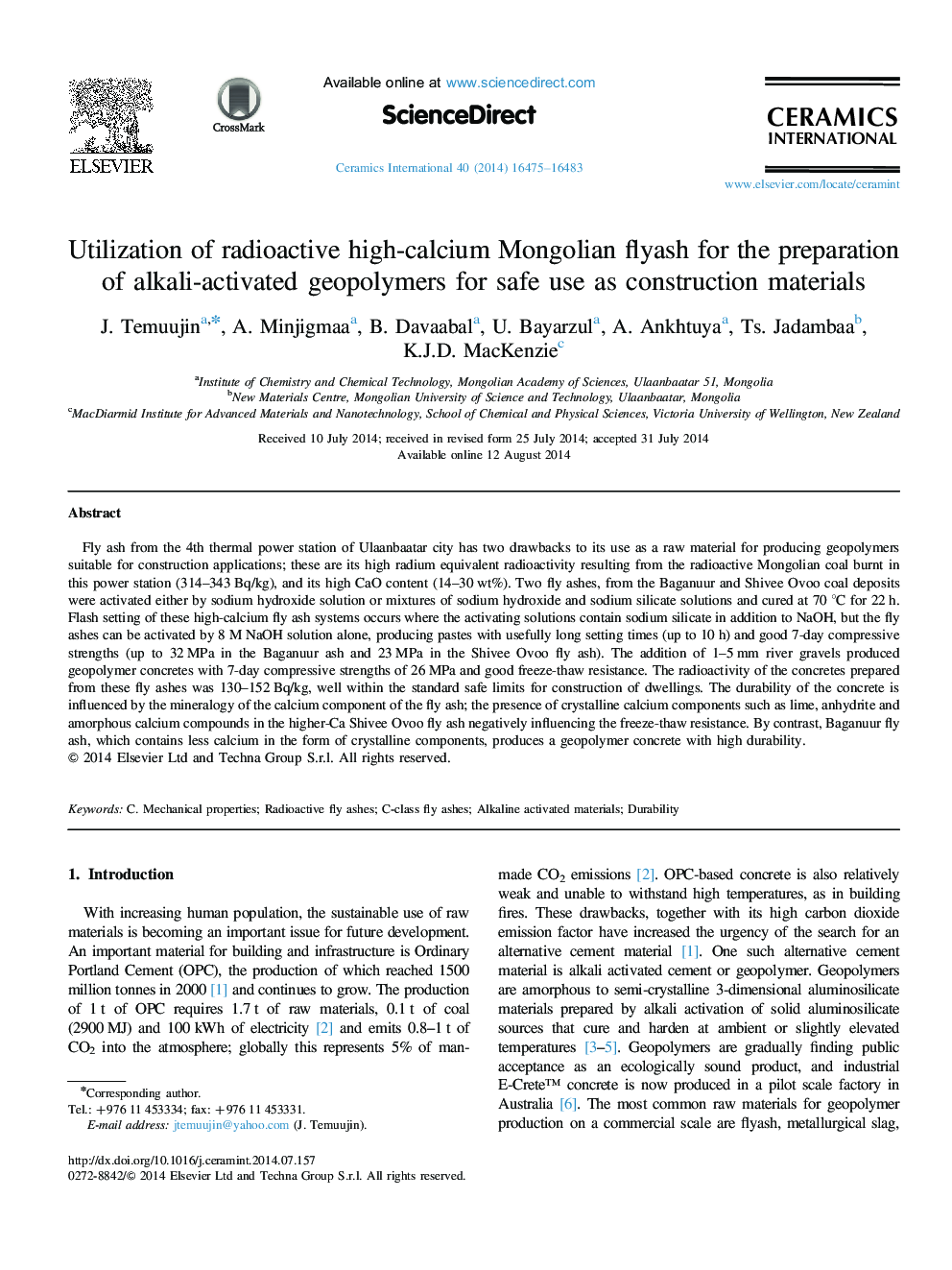| Article ID | Journal | Published Year | Pages | File Type |
|---|---|---|---|---|
| 1460526 | Ceramics International | 2014 | 9 Pages |
Fly ash from the 4th thermal power station of Ulaanbaatar city has two drawbacks to its use as a raw material for producing geopolymers suitable for construction applications; these are its high radium equivalent radioactivity resulting from the radioactive Mongolian coal burnt in this power station (314–343 Bq/kg), and its high CaO content (14–30 wt%). Two fly ashes, from the Baganuur and Shivee Ovoo coal deposits were activated either by sodium hydroxide solution or mixtures of sodium hydroxide and sodium silicate solutions and cured at 70 °C for 22 h. Flash setting of these high-calcium fly ash systems occurs where the activating solutions contain sodium silicate in addition to NaOH, but the fly ashes can be activated by 8 M NaOH solution alone, producing pastes with usefully long setting times (up to 10 h) and good 7-day compressive strengths (up to 32 MPa in the Baganuur ash and 23 MPa in the Shivee Ovoo fly ash). The addition of 1–5 mm river gravels produced geopolymer concretes with 7-day compressive strengths of 26 MPa and good freeze-thaw resistance. The radioactivity of the concretes prepared from these fly ashes was 130–152 Bq/kg, well within the standard safe limits for construction of dwellings. The durability of the concrete is influenced by the mineralogy of the calcium component of the fly ash; the presence of crystalline calcium components such as lime, anhydrite and amorphous calcium compounds in the higher-Ca Shivee Ovoo fly ash negatively influencing the freeze-thaw resistance. By contrast, Baganuur fly ash, which contains less calcium in the form of crystalline components, produces a geopolymer concrete with high durability.
